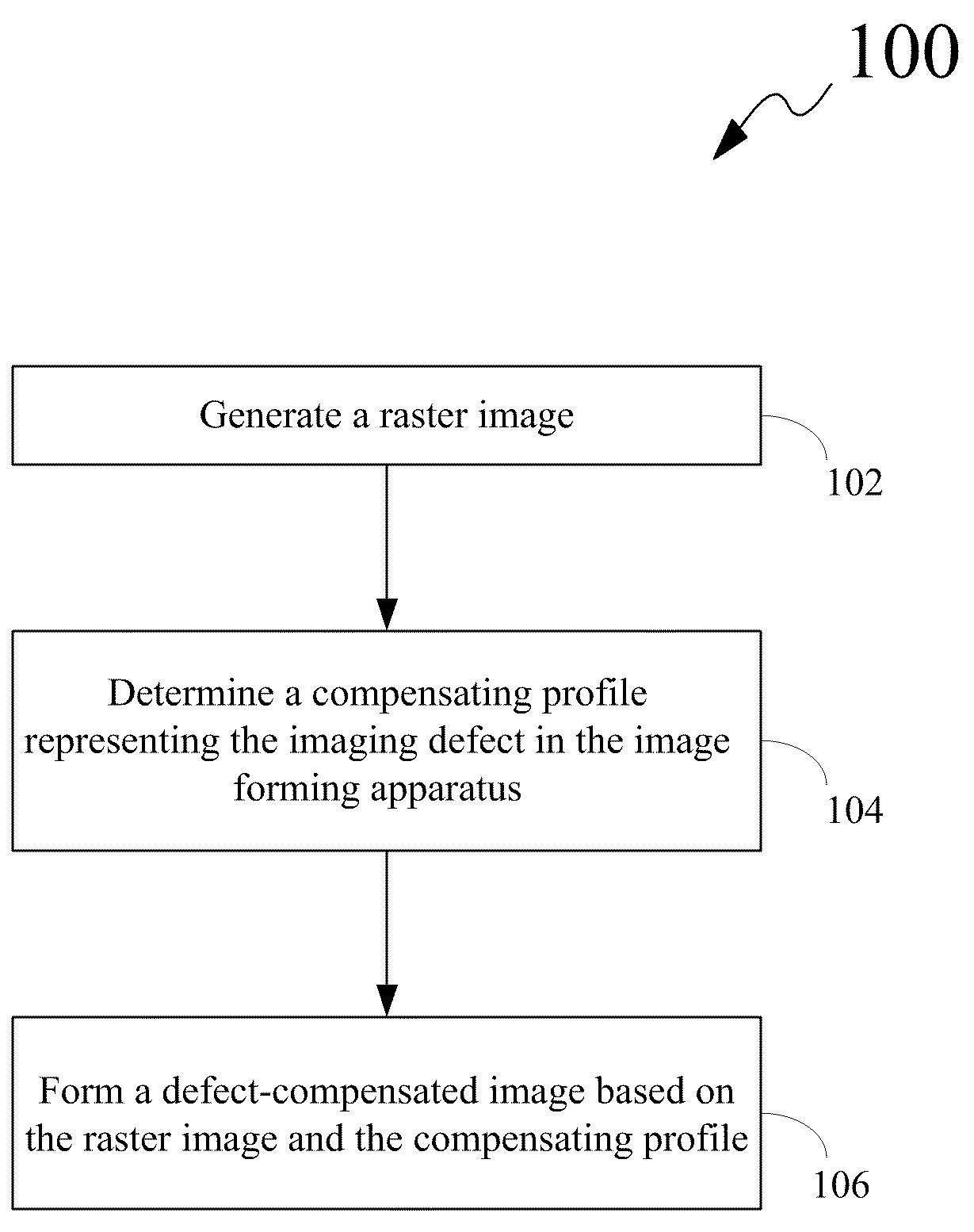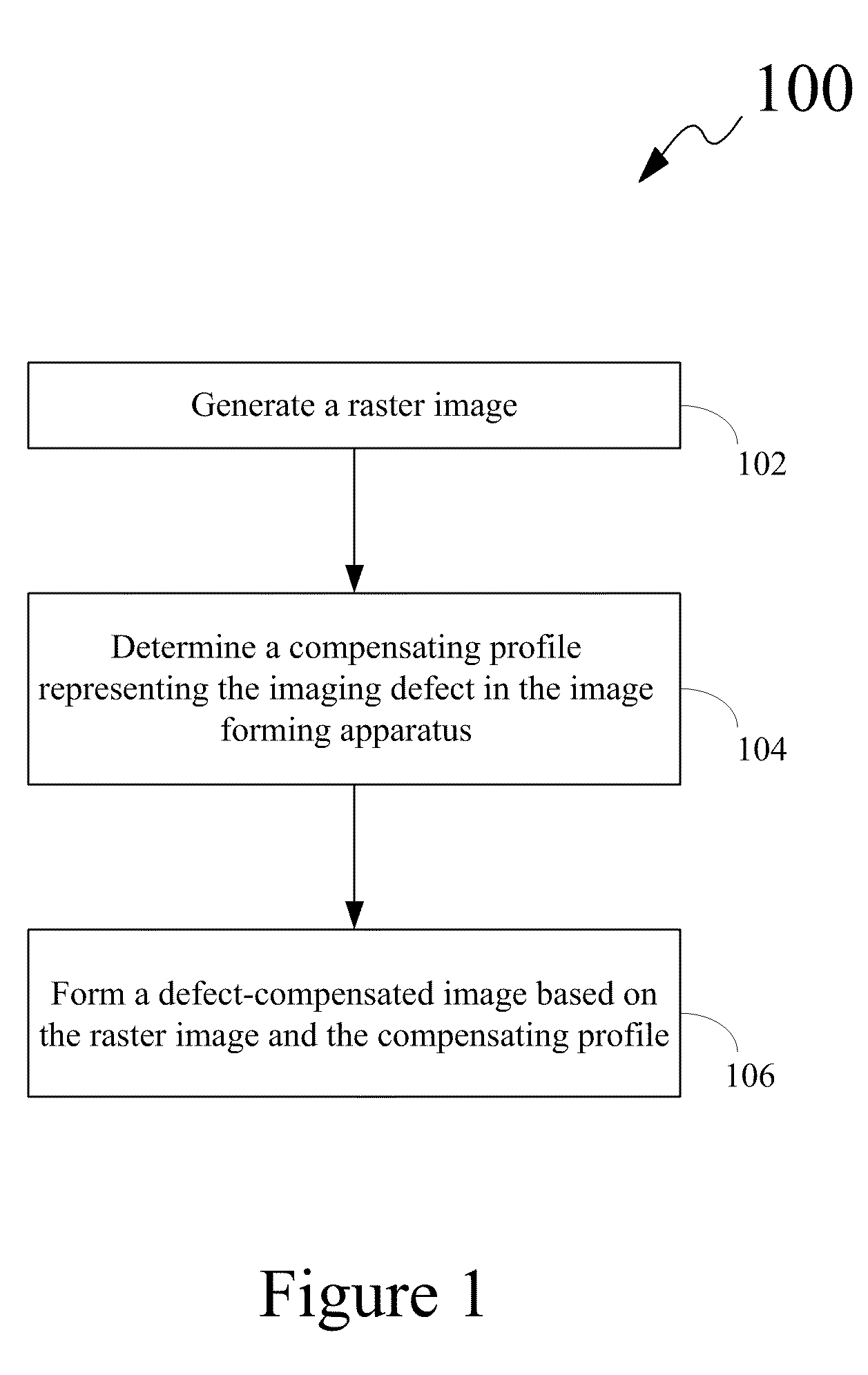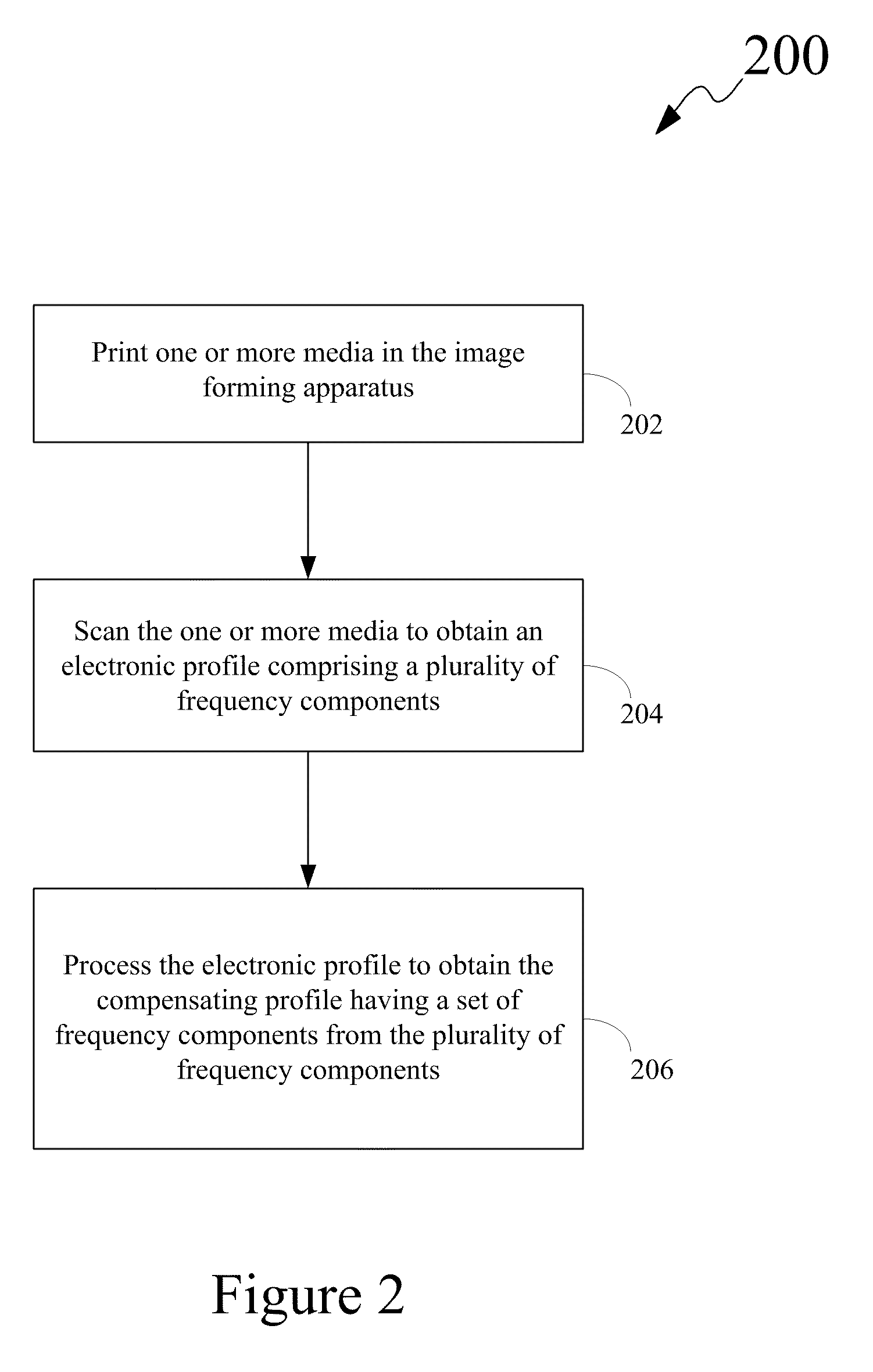Method and System for Compensating Imaging Defect in Image Forming Apparatus
a technology compensating imaging defect, which is applied in the field of image forming apparatus, can solve the problems of reducing the quality of images, and affecting the quality of images
- Summary
- Abstract
- Description
- Claims
- Application Information
AI Technical Summary
Benefits of technology
Problems solved by technology
Method used
Image
Examples
example
[0073]In the following example, the method of the present disclosure, such as method 100, was investigated in an image forming apparatus for compensating an imaging defect therein. Such an investigation will now be described with reference to FIGS. 8a, 8b, 9a, 9b, and 10.
[0074]FIG. 8a depicts a full-page print 800 by the image forming apparatus. Full page print 800 represents an original printing by the image forming apparatus including the imaging defects. In this investigation, full-page print 800 is of constant gray level, and has average lightness (L*) of about 50 L*. It will be apparent to a person skilled in the art that the term ‘average lightness’ mentioned herein refers to a perception of darkness of an image as detected by a human eye or measured by an apparatus, such as a reflection densitometer. Accordingly, the average lightness of 50 L* refers to a perceived darkness of about 50 percent by the human eye or the reflection densitometer.
[0075]As depicted in FIG. 8a, full-...
PUM
 Login to View More
Login to View More Abstract
Description
Claims
Application Information
 Login to View More
Login to View More - R&D
- Intellectual Property
- Life Sciences
- Materials
- Tech Scout
- Unparalleled Data Quality
- Higher Quality Content
- 60% Fewer Hallucinations
Browse by: Latest US Patents, China's latest patents, Technical Efficacy Thesaurus, Application Domain, Technology Topic, Popular Technical Reports.
© 2025 PatSnap. All rights reserved.Legal|Privacy policy|Modern Slavery Act Transparency Statement|Sitemap|About US| Contact US: help@patsnap.com



